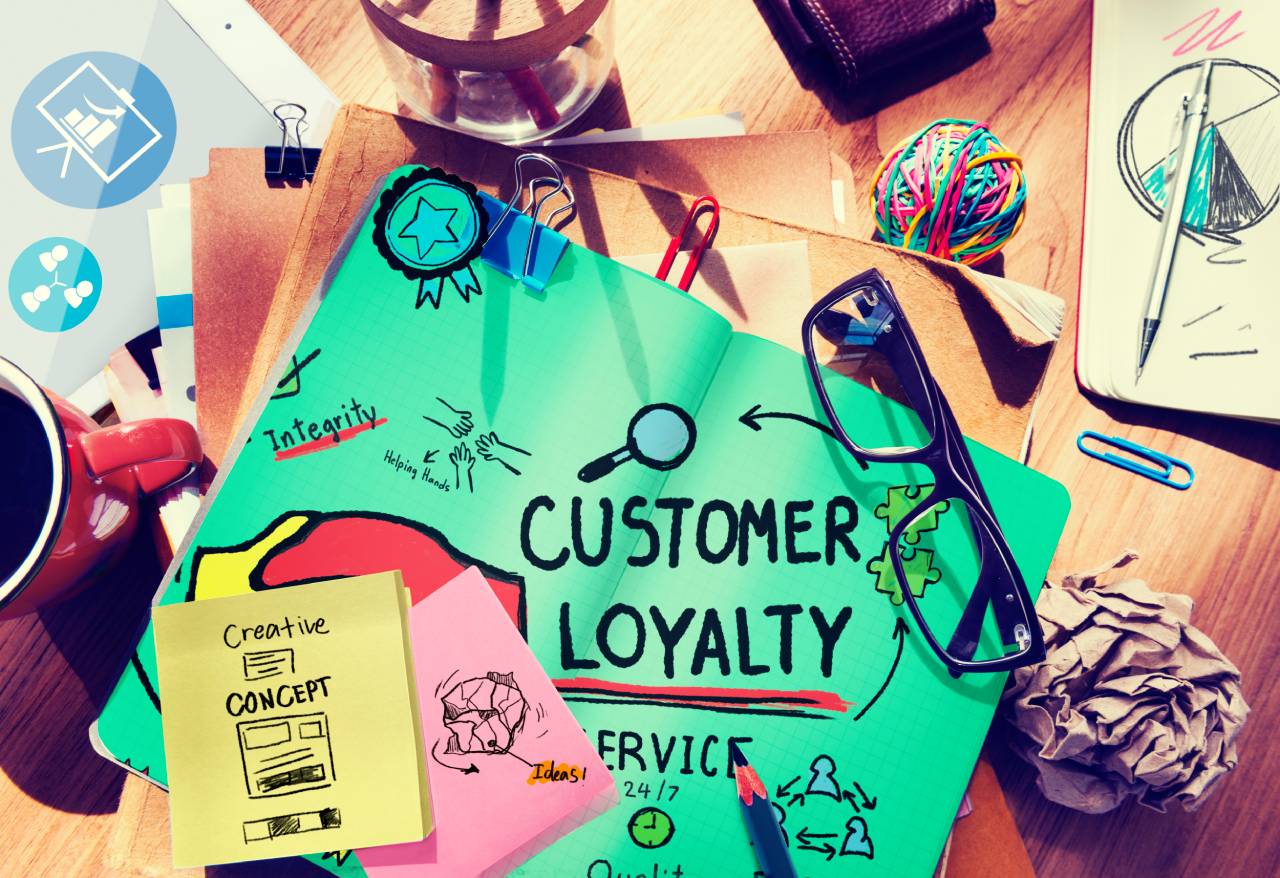Customer service defines the heartbeat of any business. Great customer service fosters loyalty and drives growth. When customers feel valued, they return again and again.
Understanding customer needs is the foundation of any successful enterprise. Active listening and empathy create meaningful connections.
Technology and personalization further enhance these interactions.
This article explores ten actionable customer service strategies you can implement today. Each strategy empowers your team and elevates customer satisfaction.
Embrace these techniques for continuous improvement in your organization.
Table of Contents
Understanding the Importance of Customer Service
Excellent customer service is key to business success. It shapes customer perceptions, influences decisions, and boosts loyalty. Repeat business grows when customer service impresses, fueling customer retention.
A culture of service excellence inspires loyal customers to spend more. Happy customers trust brands, building strong customer relationships. This trust lets businesses charge premiums confidently.
Omnichannel communication ensures customers feel understood. Employ various platforms for seamless customer interaction. Make every customer journey smooth and consistent.
Poor service risks losing potential customers forever. Robust strategies counteract customer complaints and missed expectations. Aim for exceptional customer experience to solidify satisfaction.
Focus on these service improvement strategies:
- Train the customer service team effectively.
- Enhance response times and resolution speed.
- Encourage regular customer feedback.
- Aim for positive experiences at every touchpoint.
Customer-centric brands go the extra mile, creating delightful customer support. Building brand equity through exceptional service is both art and necessity.
When customers are happy, they become ambassadors, enhancing your customer base immensely.
Employ Active Listening to Connect with Customers
Active listening is crucial for strong customer connections. It involves understanding and responding to customer needs. This builds long-lasting and meaningful relationships.
Benefits of Active Listening:
- Gain valuable customer insights
- Tailor products more effectively
- Enhance satisfaction through understanding
- Show empathy by clarifying concerns
Practicing active listening opens doors to exceptional service. Customers feel heard and appreciated. This leads to increased loyalty and retention. When customers know you’re listening, it boosts trust and satisfaction.
Active listening requires skill and daily practice. It enhances both professional and personal relationships. Active listening is powerful in creating a positive customer experience.
How to Practice Active Listening:
- Pay full attention
- Avoid interrupting
- Clarify and confirm understanding
- Encourage feedback and suggestions
Incorporate active listening into customer communication strategies. Show appreciation by understanding and addressing customers’ needs.
This approach keeps customers happy and strengthens customer service skills.
Show Empathy to Build Stronger Relationships
Empathy is key in customer service. It involves understanding customer feelings deeply. Training agents on empathy enhances interactions significantly.
It helps them understand different customer scenarios better.
Incorporate technology like conversational intelligence. It provides context during interactions. Understanding customers’ emotions becomes easier. Empathetic service makes customers feel understood.
Here’s how empathy benefits your business:
- Better issue resolutions
- Improved customer satisfaction
- Stronger customer loyalty
Recognize and reward empathetic employees. This reinforces a customer-centric culture. It makes exceptional service a natural business part.
Empathetic service brings happy, loyal customers. This approach strengthens customer relationships effectively.
Leverage Technology for Efficient Communication
Harnessing the power of technology is vital. CRM systems track customer data and interactions. This personalized approach can enhance customer experience greatly.
Chatbots and virtual assistants provide round-the-clock support. By answering questions promptly, they ensure customers stay happy and satisfied.
Social media monitoring tracks online sentiments effectively. Businesses can address customer concerns faster through this. Integrating team communication apps with social media helps, too.
Evaluating your technology stack is crucial. It optimizes communication methods across various channels. This boosts overall customer satisfaction and addresses service pain points.
Technology Tools for Enhanced Customer Service:
| Tool | Benefit |
|---|---|
| CRM Systems | Personalized customer interactions |
| Chatbots & Virtual Assistants | 24/7 customer support |
| Social Media Monitoring | Rapid response to customer feedback |
| Team Communication Apps | Real-time updates for prompt issue resolution |
Constant evaluation and updating are key. Use these strategies, and your customer base will grow. Customers appreciate exceptional service, and happy customers remain loyal.
Personalize Customer Interactions for Greater Impact
Personalizing customer interactions boosts loyalty and satisfaction. Studies show 56% of customers make repeat purchases when experiences are tailored.
To excel in personalization, understanding preferences is key. Data-driven insights can unlock powerful personalization strategies, transforming generic exchanges into meaningful ones.
Over 80% of customers prefer personalized brand interactions. Embracing this trend means delivering solutions meeting individual needs.
The shift to personalized communication shows customers they are valued and heard. This level of care fosters stronger customer relationships and loyalty bonds.
Personalization may be challenging, but its rewards are significant. To enrich customer experiences, employees must fine-tune the balance between technology and personal touch.
Addressing specific customer concerns and desires leads to overall satisfaction. Here’s a quick guide to effective personalization:
- Gather and analyze customer data.
- Use insights to customize interactions.
- Focus on personal relevance over general responses.
Personalizing interactions isn’t just a strategy; it’s a commitment to exceptional customer service. Make every customer journey memorable with personalized touchpoints.
The extra mile creates happy customers and ensures exceptional customer experiences.
Implement Proactive Problem-Solving Techniques
Implementing proactive problem-solving techniques is key. Begin by understanding customer needs beyond quick fixes.
Form genuine connections and show empathy every time. Analyze complaints to find root causes. This helps identify improvement areas and necessary changes.
Empower your team to take action. Staff can resolve concerns and transform negative experiences. Training in product knowledge and soft skills is vital.
Focus on listening and problem-solving for better service.
Assess performance through customer surveys regularly. Measure satisfaction to track progress. This helps adjust strategies proactively.
Key Steps:
- Understand and connect with customers.
- Analyze complaints thoroughly.
- Empower staff for effective solutions.
- Train in soft skills and product knowledge.
- Regularly assess performance through surveys.
Consider focusing on these critical steps. It ensures excellent customer experiences and satisfaction.
Maintain Open Channels for Customer Feedback
Creating avenues for customer feedback is essential. It helps businesses understand and improve experiences. Use tools like phone or email surveys.
These give insight into customer satisfaction.
Customer feedback shows their opinions matter. This input shapes better business operations. Customer satisfaction surveys reveal strengths and weaknesses.
They measure business performance from the customer’s perspective.
Implement feedback loops to address customer concerns quickly. Prompt action enhances service quality. This creates a cycle of continuous improvement.
Happy customers become loyal customers.
Effectively gather and analyze feedback. It reveals sentiment trends and actionable data. This supports informed decision-making for positive experiences.
Suggested Feedback Channels:
- Phone Surveys
- Email Surveys
- Online Forms
- Social Media Comments
- Live Chats
Open channels empower excellent customer service. They strengthen customer relationships and interaction. This ultimately grows your customer base. Maintain open channels for satisfied customers and exceptional service.
Train Staff to Deliver Exceptional Service
Empower your team with ongoing training. Regular sessions update staff on vital skills. Dynamic role-playing exercises improve customer interactions. This boosts confidence and performance across various situations.
Equip team leaders with essential resources. They can deliver bite-sized training regularly. This reinforces dedication to excellent customer service. Continuous learning maintains high customer service standards.
Benefits of Staff Training:
- Improved customer interaction skills
- Faster response times
- Enhanced problem-solving abilities
Analyzing customer complaints reveals improvement areas. Understanding root causes aids in adjusting service delivery. This proactive approach satisfies customers and exceeds expectations.
Happy customers lead to strong customer relationships. Retaining loyal customers becomes easier with exceptional service.
Empowered teams deliver exceptional customer experiences. They go the extra mile to make customers happy.
Training programs strengthen customer support teams. Equip agents to handle diverse customer concerns efficiently. This translates into positive experiences and increased customer satisfaction.
In essence, invest in training your customer service team. It leads to satisfied customers and a loyal customer base. This commitment fosters exceptional service at every customer journey stage.
Utilize Customer Data to Inform Strategies
To improve customer service, capture customer feedback regularly. This reveals expectations and areas needing improvement.
A centralized customer database simplifies service interactions. It gathers information from all platforms for seamless service.
Utilize AI technology to gauge real-time customer sentiment. This helps tailor responses and enhance the experience. Personalized experiences boost customer satisfaction and retention. Use behavior and preferences data for this.
Here’s a quick list to optimize customer service strategies:
- Gather diverse customer feedback.
- Use AI for sentiment analysis.
- Personalize based on behavior data.
- Centralize customer information.
- Continuously adjust strategies.
Visualize your customer journey with these insights. Consistency and effectiveness improve loyalty and relations. Creating positive experiences leads to satisfied, happy customers!
Foster a Customer-Centric Culture Within Your Organization
Creating a customer-centric culture starts with strong leadership support. Leaders should prioritize customer satisfaction as a fundamental goal.
Recognizing employees who deliver excellence is crucial. Rewards encourage focus on delighted customers and their satisfaction.
Align company values with customer satisfaction. Ensure decisions benefit the customers most. Communicate your commitment to excellent service standards.
This alignment fosters consistent, satisfied customer experiences.
Training is vital for embedding service quality. Equip staff with necessary customer service skills. Embed service quality in all communications. Communication, both internal and external, should reflect this commitment.
A clear customer service vision is essential. Guide employees to their critical roles. Understanding their impact on exceptional customer experiences is vital. This vision keeps customer satisfaction at the forefront.
Checklist for a Customer-Centric Culture:
- Prioritize customer satisfaction as a key goal.
- Reward employees who exceed customer expectations.
- Align company values with customer satisfaction.
- Train staff regularly on customer service skills.
- Communicate service quality both internally and externally.
- Develop a guiding customer service vision.
Fostering this culture helps in creating loyal customers. It drives positive customer relationships and experiences. The result is a thriving, customer-first organization.
Conclusion: Commitment to Continuous Improvement
Committing to continuous improvement transforms customer service. It adapts businesses to evolving customer expectations gracefully.
Following up after interactions builds strong, long-term customer relationships. This ensures customers feel valued and heard.
Honesty about service expectations prevents trust erosion. Over-promising damages customer confidence and leads to disappointment.
Equip your team through consistent training and development. This empowers them to exceed expectations confidently.
Implementing an omnichannel strategy is vital. It provides seamless and consistent service across channels. Happy customers result from smooth service journeys. Businesses gain loyal and satisfied customers this way.
In summary, continuous improvement is a commitment. It fosters exceptional customer experiences and satisfaction. Don’t just meet customer needs; exceed them.
Create positive experiences that turn potential customers into loyal customers.





